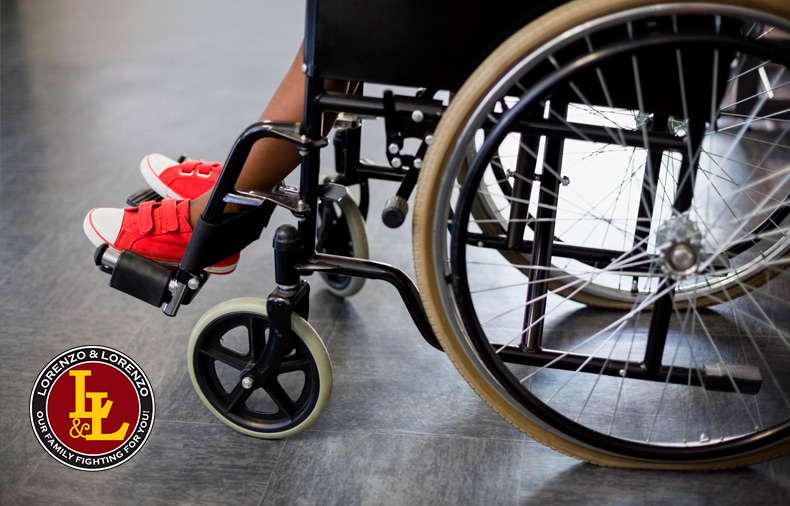
Learn how Florida defines a catastrophic injury and how this might impact your compensation in a personal injury claim
In personal injury law, not all injuries are treated the same, and determining whether an injury is classified as “catastrophic” can significantly influence the course of a case.
Catastrophic injuries, by nature, have long-lasting effects on a victim’s life, often requiring extensive medical care and impacting their ability to work or live independently. This classification is critical, as it affects how much compensation a victim may be entitled to and whether any legal limits apply to the payout.
Let’s explore what qualifies as a catastrophic injury and why it plays such a pivotal role in Florida personal injury claims.
How does Florida law define a catastrophic injury?
Florida law defines a catastrophic injury as a severe injury that results in permanent impairment to a person’s physical or mental abilities, loss of a bodily function, or significant disfigurement or scarring. These types of injuries commonly result from high-speed car accidents, truck accidents, motorcycle accidents, and pedestrian accidents due to the force of the impact on the victim’s body.
What is an example of a catastrophic injury?
Whether or not an injury is considered catastrophic can depend on the extent of the injury and the way it impacts the victim’s life, but below are some examples:
- Traumatic brain injuries (TBIs). Brain injuries can leave a person in a coma or result in brain damage that leads to permanent cognitive impairment, memory loss, or loss of motor function, severely impacting their ability to lead an independent life.
- Spinal cord injuries. Severe spinal injuries can lead to partial or complete paralysis, often leaving the person unable to walk or perform daily activities without assistance.
- Amputations. The loss of a limb or other body part dramatically alters a person’s physical abilities, often requiring prosthetics, long-term rehabilitation, and home modifications.
- Vision loss. Serious eye injuries can result in partial or total vision loss, drastically reducing a person’s ability to navigate the world independently and perform basic tasks.
- Severe burns. Deep burns can cause lasting scars or disfigurement, especially to the face, impacting not only physical health but also emotional well-being due to the visible changes.
- Hearing loss. Permanent hearing loss from an injury can make communication and daily tasks difficult, isolating the person from social and professional opportunities.
- Loss of sexual function. Injuries that impair sexual function can significantly affect a person’s quality of life, leading to both physical and emotional challenges.
- Injuries to body parts critical to work. Damage to limbs, hands, or other body parts crucial for a person’s profession can prevent them from returning to their job or working in their field.
Beyond the physical limitations, catastrophic injuries often lead to significant emotional and financial hardships, so it’s essential to fully understand your legal rights if you’ve suffered a catastrophic injury due to someone else’s negligence in Florida.
Calculating the Cost of Your Personal Injury Claim
Understand the factors that go into calculating the value of a personal injury claim in Florida.
How catastrophic injuries impact compensation in Florida car accidents
Florida operates under a no-fault insurance system for car accidents, which means that each driver’s personal injury protection (PIP) insurance covers their own medical expenses and lost wages up to a certain limit, regardless of who caused the accident. However, PIP benefits are often insufficient to cover the costs associated with catastrophic injuries, such as traumatic brain injuries or spinal cord damage, which require extensive and long-term care.
Fortunately, if you sustain a catastrophic injury in a Florida car accident, you may be able to step outside the no-fault system and file a personal injury lawsuit against the at-fault driver to seek compensation beyond what PIP covers.
To do this, your injury must meet the state’s serious injury threshold, which includes injuries that result in significant and permanent loss of an important bodily function, permanent injury, scarring, disfigurement, or wrongful death.
Because the stakes are so high for car accident victims who suffer catastrophic injuries, it’s crucial to consult with a local Tampa car accident attorney early on in the process who can help you explore all your legal options and get the full compensation you deserve.
Understanding compensation for catastrophic injuries
For anyone who has suffered a severe injury, the key question they should be asking is: How much money will I need to support myself and my family for the rest of my life?
When you hear about folks collecting millions of dollars in big injury settlements, it’s easy to think of that as a windfall. But imagine being 20 years old and having to pay for 24/7 medical care for the next 50 years.
As an example, the Christopher & Dana Reeve Foundation estimates that lifetime expenses for a 25-year-old who suffers a high tetraplegia spinal cord injury, which is an injury to the uppermost part of the spinal cord between the C1 and C4 vertebrae in the neck, could cost almost $5 million.
The reality is that costs add up fast, and a catastrophic injury settlement is intended to help make up some of these short-term and long-term expenses.
When estimating the necessary compensation for catastrophic injuries, it’s essential to consider all types of damages that may impact the victim’s quality of life and financial future. These include:
- Medical expenses. This covers both immediate medical care and long-term treatment, such as surgeries, hospital stays, rehabilitation, medications, and ongoing therapy.
- Pain and suffering. This compensates for the physical pain and emotional trauma caused by the injury, including depression, anxiety, and diminished quality of life.
- Home care and assistance. Many victims require long-term or permanent in-home care, which can involve hiring nurses, aides, or other caregivers.
- Lost wages and earning capacity. Compensation should account for both the income lost due to the injury and the potential future earnings that the victim will miss out on because they’re unable to work.
- Future medical care. Catastrophic injuries often require lifelong care, including around-the-clock assistance, home modifications, specialized equipment (like wheelchairs or ventilators), and regular medical evaluations.
- Loss of enjoyment of life. Many catastrophic injuries prevent individuals from engaging in activities they once enjoyed, and this loss should be considered in compensation.
- Loss of consortium. Spouses and family members may also suffer from the victim’s injury, experiencing loss of companionship, intimacy, and emotional support. Compensation can include damages for the impact the injury has on family relationships.
Ultimately, the goal of compensation is to provide enough financial security to cover these extensive costs and ensure that the injured person can maintain a quality of life despite the severity of their injury.
Get help from an experienced Tampa catastrophic injury attorney
If you or a loved one has suffered a catastrophic injury in Florida due to someone else’s negligence, the experienced catastrophic injury attorneys at Lorenzo & Lorenzo can help you get the full compensation you deserve.
With a proven history of success in handling catastrophic injury cases throughout Florida, we’ve seen firsthand the life-altering challenges accident victims and their families face. That’s why we’re committed to guiding you through every step of the legal process and fighting for your rights to ensure you receive the financial support you need for medical care, rehabilitation, and your family’s future.







